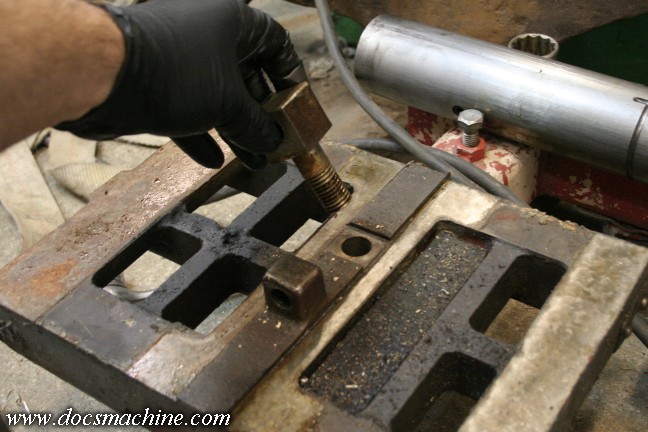Years ago the firm where I am employed purchased a 12-speed 14 inch LS lathe of WWII vintage at a vocational school auction. There were the usual issues with the machine, and while most were taken care of long ago, the fact that there was a stack of shims between the right end of the carriage and apron had been eating at me for a long time, until last week. To make a long story short, the problem was caused by a less than stellar mechanic. There are two ALMOST identical gibs on the back edge of the apron that are for preventing the front of the carriage from lifting off the bed ways. The only difference between the gibs is that one has an approximately 1/8 wide groove milled on its lower side, in order to straddle a guide pin. The guy that worked on this machine last crossed up these gibs, and instead of figuring why the apron would not seat properly to the bottom of the carriage, did a barn yard fix with the shims to keep the apron from wracking as the bolts were tightened. There is a slight guide pin bruise on the wrong gib, where the master mechanic tightened the bolts in his attempt to get the apron to seat into its proper position. Surprisingly, considering all the mechanical mis alignments this shim job created, and lack of oil being pumped to the carriage, the lathe is in pretty good shape for its age.
No doubt others have come across some really weird situations where machines have been assembled incorrectly. What is your craziest discovery of this nature?
No doubt others have come across some really weird situations where machines have been assembled incorrectly. What is your craziest discovery of this nature?


